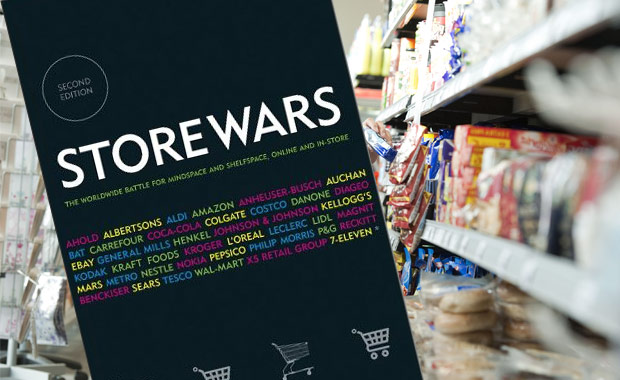 How much do suppliers really value local retailers, is a question that independent shopkeepers often ask themselves.
How much do suppliers really value local retailers, is a question that independent shopkeepers often ask themselves.
Open to the same competitive pressures as the big supermarkets and competing for the same shoppers, independents often feel they are locked out of the best deals and can’t buy at the prices the grocers sell for.
A new edition of Store Wars, co-written by businessman Greg Thain and former Cadbury marketer John Bradley, provides some great answers to the question. Most importantly, they advise manufacturers to support weak retailers. Before independents get too hopeful it has to be said that Thain and Bradley argue that in the past 10 years a major switch in power has happened. After around a century in control, the big brand manufacturers are now number two to the likes of Walmart and Tesco. This has implications for all local shops.
There are two reasons for the success of big retail. Firstly, they now know more about their shoppers and market to them better than the brands can. This erodes big brands traditional control of the “mindspace” of the shopper.
Second, own labels gives big retailers greater say over what is stocked in store. It means they can challenge all but the strongest brands with cheaper alternatives. Thain and Bradley show that “hustle” strategies used by big manufacturers to buy shelf space are now unproductive. One study found that 90 per cent of trade-marketing initiatives lost money for the manufacturer.
“Manufacturers cannot afford to buy their way to shelfspace success in the long run,” they write. Today, manufacturers spend up to 30 per cent of the selling price on buying shelfspace from big retail. This is not translated into profit for the retailers as competition is so intense they have to pass the benefit on to shoppers. This hurts independent retailers locked out of these deals.
Because most shoppers don’t write lists and buy what they see, winning presence in-store is vital for manufacturers. Supermarkets exploit this fear. But not too much as they fear being out-of-stock of what shoppers want can backfire on them as consumers go to their competitors.
What can trade marketers do? Support weak retailers. “For strategic reasons, retailers who are weak and losing customers should be encouraged and supported…manufacturers should be hesitant to pursue actions that encourage greater retail concentration.” Good category advice is also an area where they can help.
Store Wars is written for the people who go to business schools to work out strategies for selling branded goods. The authors have a wealth of knowledge and write clearly. It is a very useful guide to the major forces that are driving change in the convenience channel.
Local shops do not feature much. The growth of Tesco convenience stores is presumed to be unstoppable. However, there are hints at ways that the independent can fight back. Perhaps wholesalers can use symbol groups and own label to compete.
But everything could soon be overturned by the arrival of e-tailers, with the shadow of Amazon looming large over the shoulder of big retail. Despite all this, specialists with good local know-how can continue to breathe.





Comments
This article doesn't have any comments yet, be the first!